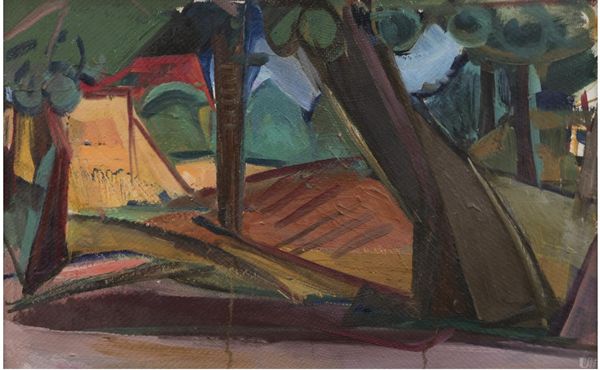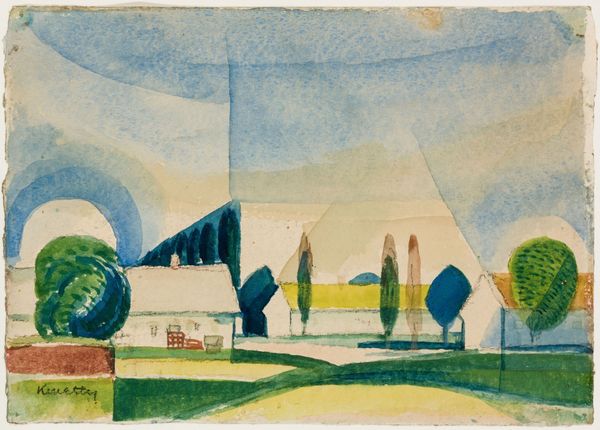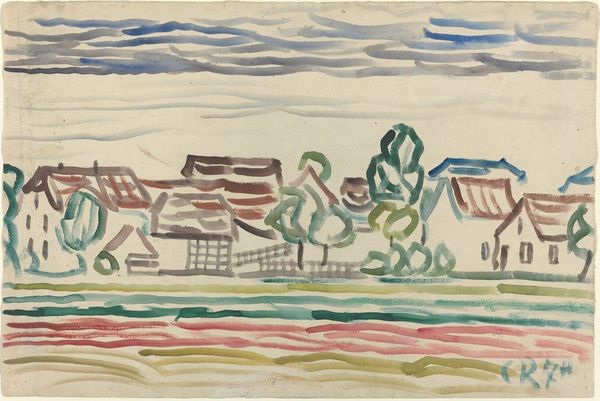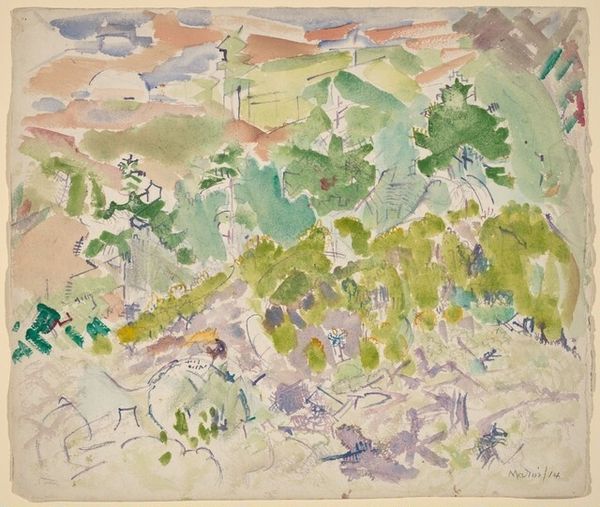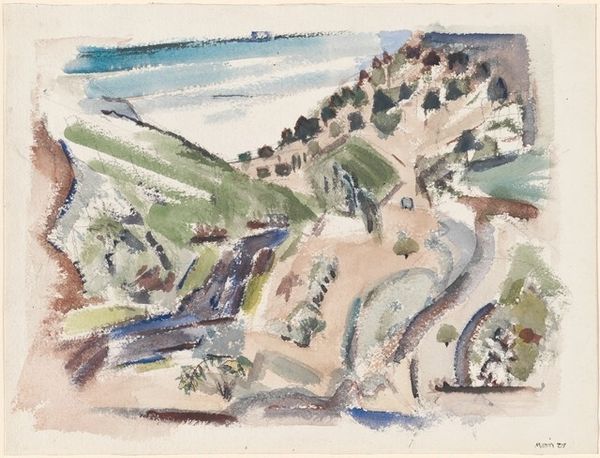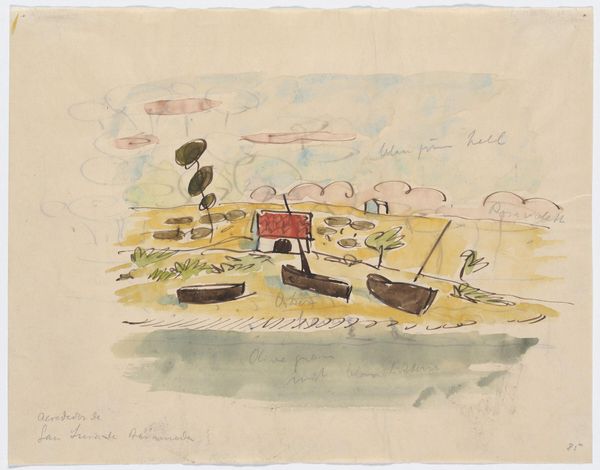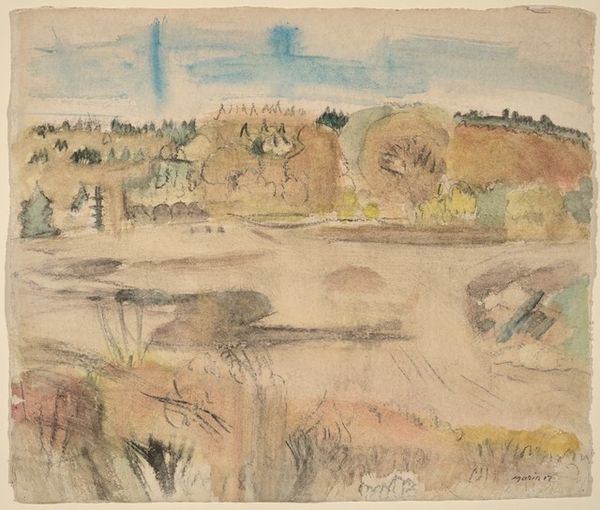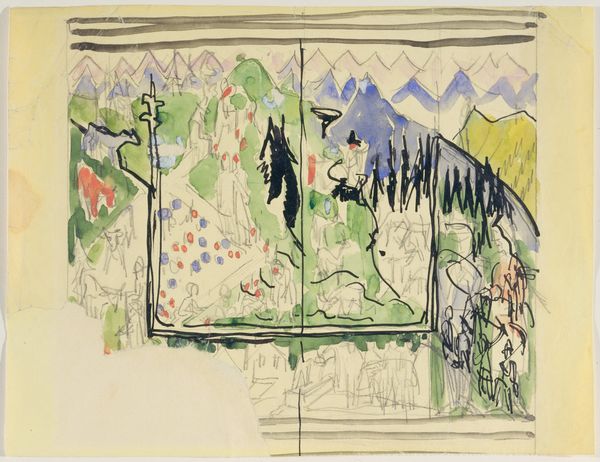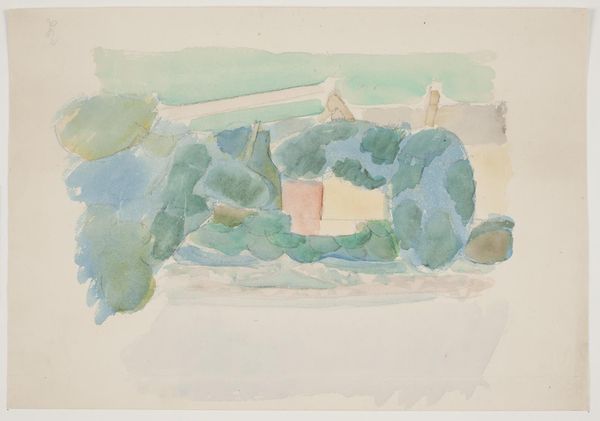
Copyright: Public Domain
August Macke painted this watercolour ‘View of Hilterfingen’ sometime before 1914. Just look at the way he allows the colours to bleed into each other, it's all about the process. There’s a real lightness of touch here; he’s not heavy-handed with the paint, letting it pool and flow to create these wonderful washes of colour. The surface of the paper peeks through in places, adding to that sense of translucence. Notice that insistent vertical mark just right of centre, like a mast, this anchors the composition whilst allowing your eye to wander over the planes of colour. There’s a definite nod to Cezanne in the way he’s constructed the landscape through these interlocking shapes. Macke, like many artists, was in dialogue with his predecessors, taking what he needed and moving on, showing us new ways of seeing.
Comments
stadelmuseum almost 2 years ago
⋮
In October 1913, Macke withdrew to Hilterfingen, a small town on Lake Thun in Switzerland. Here he depicted the surrounding countryside in a strongly abstracted composition. Rather than representing the meadows in various shades of green, the artist juxtaposed complementary colours such as yellow and purple, orange and blue in rhythmic alternations. He translated the rolling fields and the gabled roofs of the village houses into triangles, rhombi and rectangles spreading across the surface like a mosaic. By choosing the same formal language for nature and architecture alike, he brought them together to form a whole.)
Join the conversation
Join millions of artists and users on Artera today and experience the ultimate creative platform.
